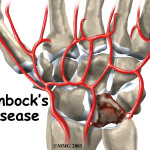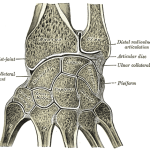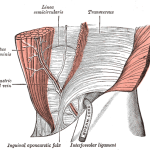THE EXCITING WORLD OF CLINICAL PREDICTION RULES
I think the world of developing clinical prediction rules (CPR) are exciting. Whilst this may be related to my scientific, rather than creative, way of thinking, I just feel that they will lead to improved management of the conditions that sports physiotherapists treat. Some clinicians believe that they will lead to recipe-based approaches to physiotherapy, but I just don’t think that will be the case. Clinical prediction rules are not, and would never be, a substitute for a skilled assessment, diagnostic process, and implementation of interventions. They will however lead to a higher level of clinical reasoning and ultimately improved outcomes.
Below I discuss an article regarding the preliminary determination of a CPR for identifying patients diagnosed with patellofemoral pain that are most likely to respond to orthotics. Once validated, this would be a clinically useful rule for deciding when to utilise orthotic therapy. This is particularly important given the expense associated with the purchase of orthotics and the prevalence of this condition.
RESEARCH REVIEW
TITLE: A clinical prediction rule for identifying patients with patellofemoral pain who are likely to benefit from foot orthoses: a preliminary determination
REFERENCE: Bill Vicenzino, Natalie Collins, Joshua Cleland, et al. Br J Sports Med 2010 44: 862-866
DESIGN: Post-hoc analysis of one treatment arm of a randomised clinical trial.
SETTING: Single-centre trial in a community setting in Brisbane, Australia.
PARTICIPANTS: 42 participants (mean age 27.9 years) with a clinical diagnosis of PFP (median duration 36 months).
INTERVENTIONS: Orthotic Therapy – The study participants were fitted and provided with foot orthoses (the brand used was Vasyli). The treating physiotherapists then selected from a range of densities and modificationtechniques (heat moulding, wedge and heel raise additions) to suit the patient.
The fitting and modification of the orthotic was done via following a standard protocol, which first optimised comfort. The orthotic was then modified over subsequent treatments to improve pain free function. I would suggest that this would be similar to clinical practice.
OUTCOME MEASURES: Patients were dichotomised into success or failure. Success was if the patient described the outcome as a ‘marked success’ on a 5-point Likert Scale, and
failure was anything less. This was done at the 12 week mark, a point in which physiotherapy would likely have concluded.
RESULTS: Data was available for 42 participants. Overall, a successful outcome was recorded in 17 (40%) participants, with the remainder (25, 60%) rated as non-success. After analysis of the predictor variables four variables were retained in the final regression model
- Age: Over 25 years
- Height: Less than 165 cm
- Worst Pain: Less than 53.25 mm on the V.A.S
- Mid-foot Width: Difference between WB and NWB greater than 10.96 mm
The four variables identified formed the best predictors of a successful outcome (marked improvement) for the PFP patients when treated with orthotic therapy. As stated above, overall the orthotic therapy was useful in 40% of cases, which suggests this is the ‘pre-test odds’. Yet, if the patient was positive on three of four variables the positive likelihood ratio (PLR) was 8.8 (95% CI 1.2 to 66.9). This would suggest ‘post-test odds’ of success would be 86%, an almost two-fold improvement.
STUDY LIMITATIONS: The authors have identified a few limitations in their study. They have identified the small sample size in the study as a potential source of bias. Keen observers would also note the broad confidence intervals stated above. Another limitation is the obvious inability of the clinician to directly and confidently incorporate the CPR into clinical practice, as it has not been validated.
CLINICAL IMPLICATIONS: This study has suggested that in patients that present with PFP, a combination of three of the following (age, height, pain severity and foot width mobility) increases the probability of success from 40% to 86%. How fantastic would it be to say to a patient you have an 86% chance that you will have a successful outcome, you just have fork out the cash for new orthotics!
This study serves mostly as a basis for further studies, which will likely involve validation of the rule. Also, it may be used by practitioners as a guide to assist clinical decisions in managing PFP with foot orthoses. However, this should be done with great care as the CPR has not been validated in another study population.
COMMENTARY: As stated above, the CPR should not be used clinically until validated in another population. However, sports physiotherapists should be aware of these predictor variables as potential indicators of a more favourable response to orthotic therapy. Whilst clearly the CPR is unsuitable for much of the athletic population i.e. older than 25 and less than 165cm tall, there are undoubtedly athletes that would fall into this category.
Until we have a validated CPR we will continue to use our qualified clinical judgment. A commonly used clinical approach is to use a patient’s response to low-dye taping techniques (see below) to assess how orthotic therapy may assist. Whilst I have found this clinically useful I would suggest this is a fairly non-scientific approach. The work of Bill Vicenzino and Co. is very much a ‘watch this space’ idea – and we will.
LOW DYE TAPING VIDEO
REFERENCE
Vicenzino B, Collins N, Cleland J, et al. A clinical prediction rule for identifying patients with patellofemoral pain who are likely to benefit from foot orthoses: a preliminary determination (2010) Br J Sports Med 44: 862-866
Related Posts
Comments











hey man, nice blog…really like it and added it to bookmarks. keep up with good work
Hey how are you doing? I just wanted to stop by and say that it’s been a pleasure reading your blog. I have bookmarked your website so that I can come back & read more in the future as well. plz do keep up the quality writing